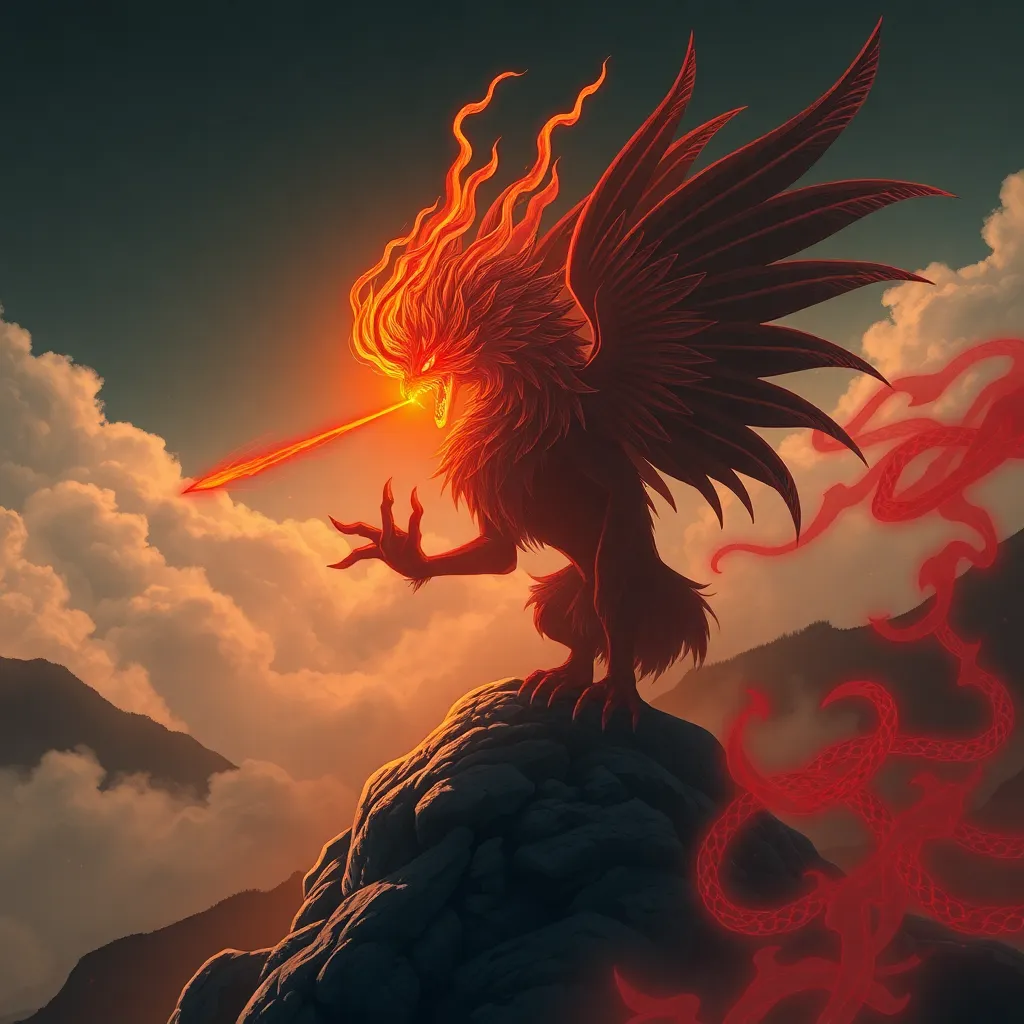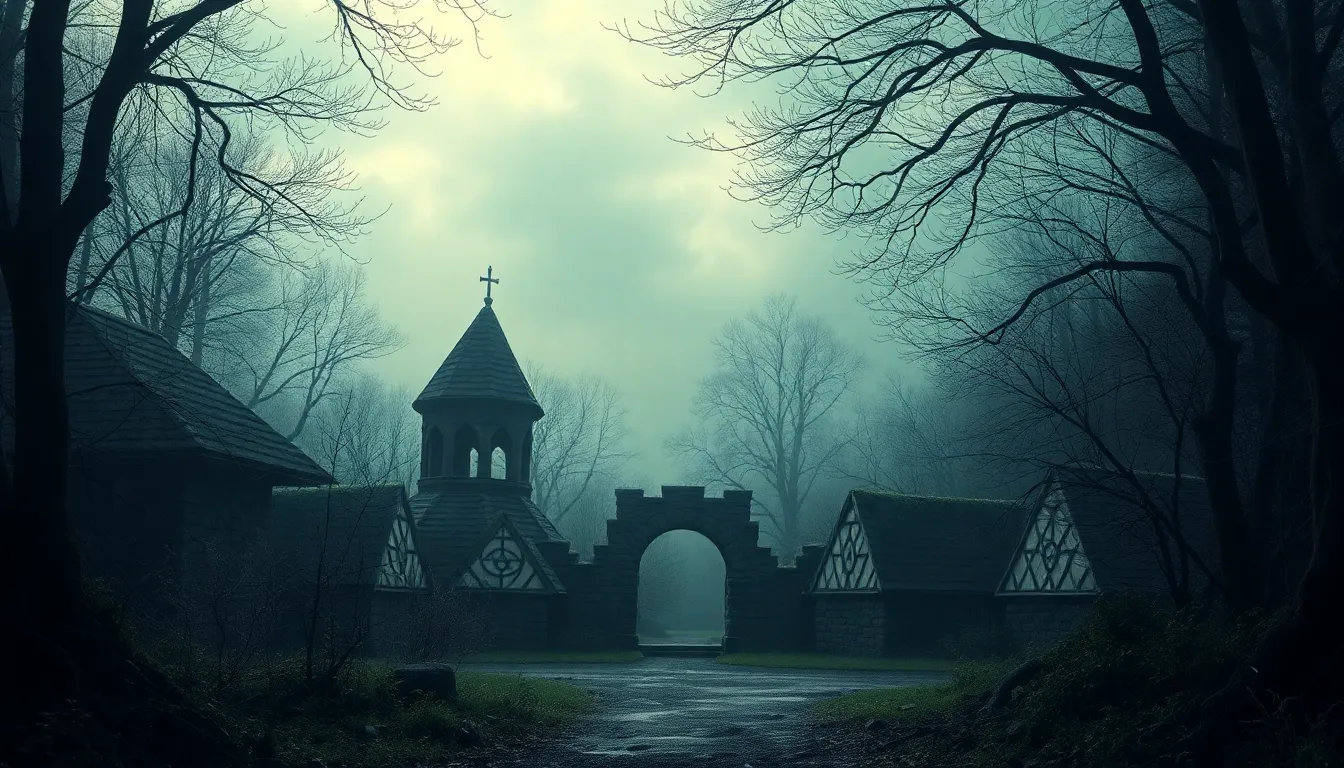The Tengu of Mount Kurama: Tales of the Fiery-Nosed Mountain Spirit
I. Introduction to Tengu Mythology
Tengu are fascinating figures in Japanese folklore, often depicted as part-man, part-bird creatures, embodying both spiritual and earthly qualities. They hold a complex position in the cultural landscape of Japan, straddling the line between benevolence and mischief. Traditionally viewed as protectors of the mountains and forests, Tengu have been both revered and feared throughout history.
Mount Kurama, located just north of Kyoto, is particularly significant in Tengu mythology. This sacred mountain is not only a natural wonder but also a pivotal setting for numerous stories involving these enigmatic beings. The mountain’s rugged terrain and mystical atmosphere contribute to its reputation as a dwelling place for Tengu, enhancing its cultural narratives.
II. The Origins of the Tengu
The origins of Tengu can be traced back to the Heian period, where they were initially associated with the Buddhist pantheon. Early depictions portrayed them more as protective spirits, akin to the guardians of Buddhist teachings. Over time, the characteristics of Tengu evolved, influenced by various cultural exchanges and religious beliefs.
As Japanese folklore developed, Tengu began to embody a broader range of traits:
- Shapeshifting abilities: Tengu are often described as having the power to transform into different forms, including that of humans.
- Martial prowess: They are recognized for their exceptional skills in combat and often serve as mentors to skilled warriors.
- Trickster nature: While some Tengu are portrayed as benevolent, others are known for their mischievous behavior, playing tricks on unsuspecting travelers.
III. Mount Kurama: A Sacred Landscape
Mount Kurama is not only a geographical landmark but also a site of rich spiritual significance. The mountain is renowned for its stunning natural beauty, featuring dense forests, flowing streams, and serene temples. This picturesque environment creates an otherworldly aura, making it an ideal setting for Tengu mythology.
Culturally, Mount Kurama is deeply embedded in the local traditions:
- Spiritual retreats: Many people visit the mountain for meditation and spiritual rejuvenation, seeking connection with nature and the divine.
- Festivals and rituals: Local festivities often celebrate the spirits of the mountain, including the Tengu, highlighting their role in the community.
- Folklore and storytelling: The mountain serves as a backdrop for countless tales, enriching the local narrative landscape.
IV. The Fiery-Nosed Tengu: A Unique Archetype
Among the various Tengu archetypes, the fiery-nosed Tengu is particularly distinctive. This character is often depicted with a prominent, red nose that symbolizes various concepts, including:
- Passion: The fiery nose represents a fervent spirit and strong emotions.
- Transformation: It is seen as a marker of the Tengu’s ability to change and adapt, embodying the duality of nature.
- Spiritual enlightenment: The fiery aspect signifies a connection to the divine, illuminating the path toward wisdom.
In local myths, the fiery-nosed Tengu often plays a critical role in guiding or challenging human characters, embodying the complexities of human nature and the consequences of one’s actions.
V. Encounters with the Tengu
Throughout history, there have been numerous tales of encounters between humans and Tengu, each illustrating important life lessons. These stories often embody themes such as:
- Respect for nature: Many tales emphasize the need to honor the natural world and its spirits.
- Humility: Encounters with Tengu often remind individuals of the importance of humility in the face of greater forces.
- Skill and perseverance: Characters who seek the Tengu’s guidance typically learn the value of dedication and hard work.
One famous story involves a wandering samurai who, after being lost in the mountains, encounters a Tengu. The Tengu challenges him to a duel, teaching the samurai humility and the importance of respecting one’s opponents.
VI. The Tengu’s Influence on Martial Arts
The connection between Tengu legends and Japanese martial arts is profound. Tengu are often associated with the mastery of combat techniques, embodying the ideal warrior spirit. This influence can be seen in various martial arts schools, where Tengu serve as symbols of:
- Skill: Mastery of martial arts is often likened to the prowess of the Tengu.
- Discipline: The rigorous training required in martial arts mirrors the dedication Tengu exhibit in their crafts.
- Spiritual growth: Many martial arts practitioners view training as a path to personal and spiritual development, akin to the Tengu’s journey.
VII. Modern Interpretations and Representations
In contemporary culture, Tengu continue to captivate the imagination through various forms of media and art. From anime and manga to films and video games, Tengu are often depicted as complex characters, blending traditional traits with modern storytelling.
The resurgence of interest in Tengu culture is evident in:
- Art exhibitions: Artists explore Tengu themes, often reinterpreting their symbolism for modern audiences.
- Literature: New works of fiction and non-fiction delve into the significance of Tengu in Japanese history and culture.
- Festivals: Events celebrating Tengu folklore are gaining popularity, fostering a renewed appreciation for these mythical beings.
VIII. Conclusion: The Enduring Legacy of the Tengu
The Tengu of Mount Kurama remains a powerful symbol in Japanese folklore, representing the intricate relationship between humanity and the natural world. Their tales, rich with lessons and moral teachings, continue to resonate across generations.
As we reflect on the cultural significance of Mount Kurama and its spirits, it becomes clear that Tengu embody a timeless connection to the mysteries of life, nature, and the human experience. Their legacy endures, inviting us to explore the depths of our own journeys and the spirits that guide us along the way.


